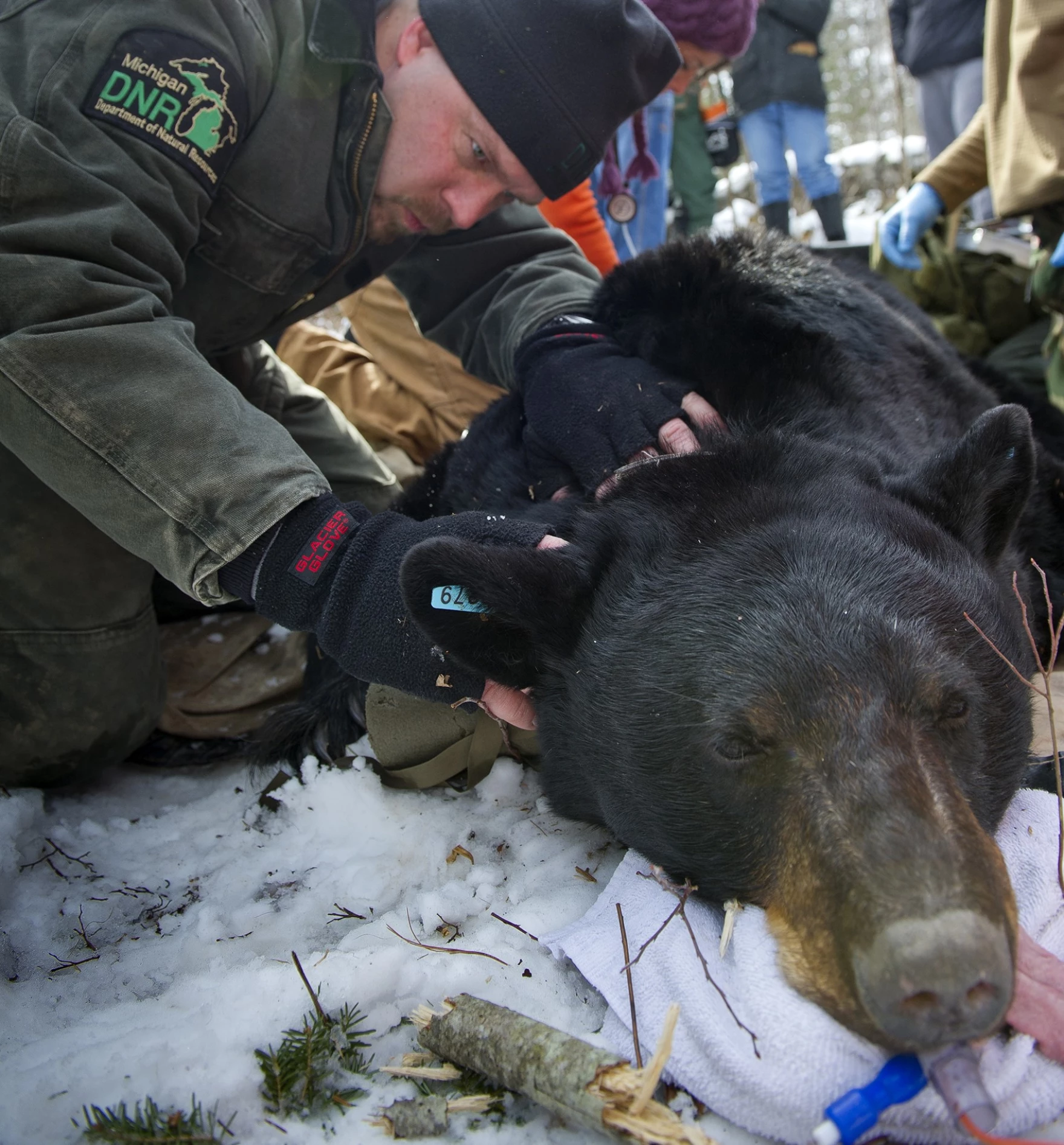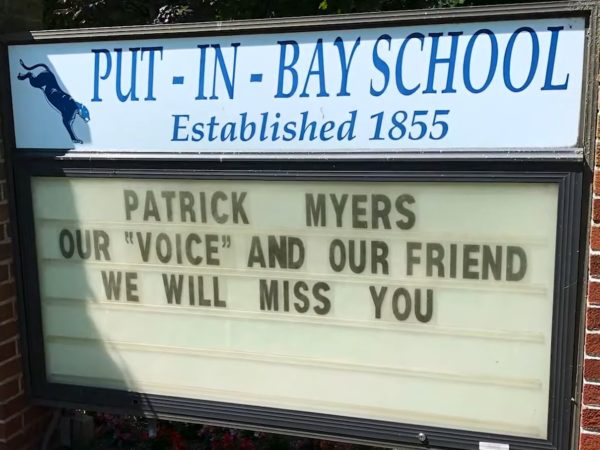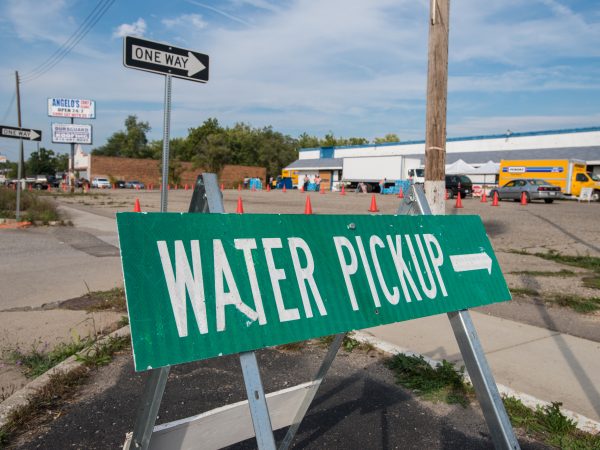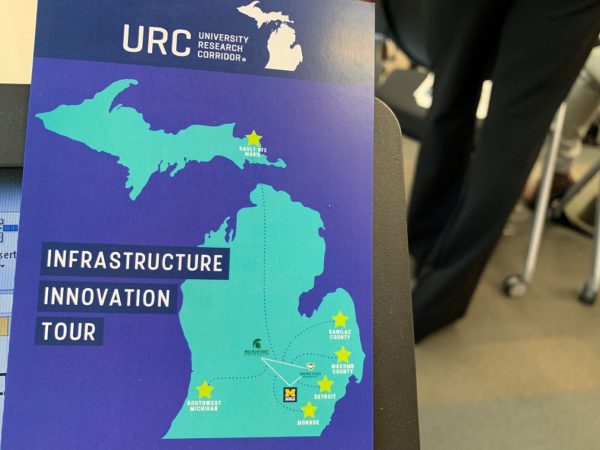
By Lester Graham, Michigan Radio
The Great Lakes News Collaborative includes Bridge Michigan; Circle of Blue; Great Lakes Now at Detroit Public Television; and Michigan Radio, Michigan’s NPR News Leader; who work together to bring audiences news and information about the impact of climate change, pollution, and aging infrastructure on the Great Lakes and drinking water. This independent journalism is supported by the Charles Stewart Mott Foundation. Find all the work HERE.
Sometimes a mother black bear is hit by a car or dies in some other unexpected way. That leaves orphaned bear cubs. The Michigan Department of Natural Resources has a sort of foster program.
DNR wildlife biologist Mark Boersen said there’s a pretty good chance they can place those cubs with another female bear. It’s tricky, but it is done.
“You can actually confuse, if you will, a bear that has cubs of her own into accepting an additional cub or sometimes even more than one cub into her own litter and raising them as her own.” Boerson said.
There are a couple of ways of doing that. The best way is to place the cubs into the mother bear’s den alongside her own cubs. The new cubs will take on the scent of the den and the mother bear won’t distinguish between her own cubs and the new cubs because they all smell the same.
“When we’re able to do it that way, it’s very close to 100% acceptance when they’re still in the den,” Boersen said.
To do something like that, the DNR needs to collar a few females. The collar issues a signal that can be tracked down. This fall and winter is an ideal time to do that. You can help.
If you’re out hiking, skiing, or hunting and you come across a bear den, take a photo of it. Drop a GPS mark on your phone. Then tell the DNR. There are details about how to do that below.
Having an idea of where you should be looking for a den is helpful.
“First of all, you’ll likely be in a relatively thick habitat, so you won’t be able to see very far, such as in a cedar swamp or a thick aspen growth,” Boersen explained.
Bear dens look different. Some bears dig a hole into the side of a hill. That hole will be about three feet in diameter. There might be a sandy pile just outside the hole and you might even see bear footprints. But other bears just make a sort of nest on the ground, sometimes against a tree or an uprooted tree that offers some protection from the weather.
“We see about 50 percent of our bear dens as excavated ground dens and the other half are in some form of surface den,” said Boersen.
He says use your eyes and your ears. When cubs are nursing they make a little grunting noise. If you hear something, stop and listen. You might have just discovered a bear den.
“Certainly don’t disturb them, but make note of the location,” he said.
If Boersen gets a report, he can check out the site himself along with the landowner to determine whether the bear is a good candidate to be collared. If it is, the bear will be sedated, collared, and the biologists will fit it with ear tags. Then they’ll return the bear to its den.
You can contact Mark Boersen for bears in the northern Lower Peninsula at 989-275-5151 or email BoersenM@Michigan.gov.
If you spot a black bear den in the Upper Peninsula, you can contact Cody Norton at 906-202-3023 or email NortonC3@Michigan.gov.
There are more than 10,000 bears in the UP. There are fewer than 3,000 in the Lower Peninsula.
If a mother bear is killed after emerging from the den with its cubs, the DNR can still try to place it with another black bear.
Biologists will track down a collared bear and surprise it. The bear ill send her cubs up a tree and then move away to try to get the perceived threat away from the cubs.
That’s when the biologists will send the orphaned cubs up the same tree. Then they smear the base of the tree with a scent. When all the cubs back themselves down the tree, they all smell the same.
That method is not quite as effective as putting cubs in the den, but they do have a success rate that ranges from 50 to 75 percent, according to Boersen.
He’s been working with bears for a couple of decades and he says it never becomes routine for him.
“It’s always exciting and I always learn something new. So every time I’m amazed when I have a successful placement or collar a new female.”
Catch more news at Great Lakes Now:
Building a Smart Lake Erie Watershed
The spawn from lake sturgeon in Michigan to be introduced to Cuyahoga River
Featured image: Michigan Department of Natural Resources wildlife biologist Mark Boersen examines a sedated bear as part of a program that places orphaned bear cubs with mother bears. (Photo Credit: David Kenyon/Michigan Department Of Natural Resources)





